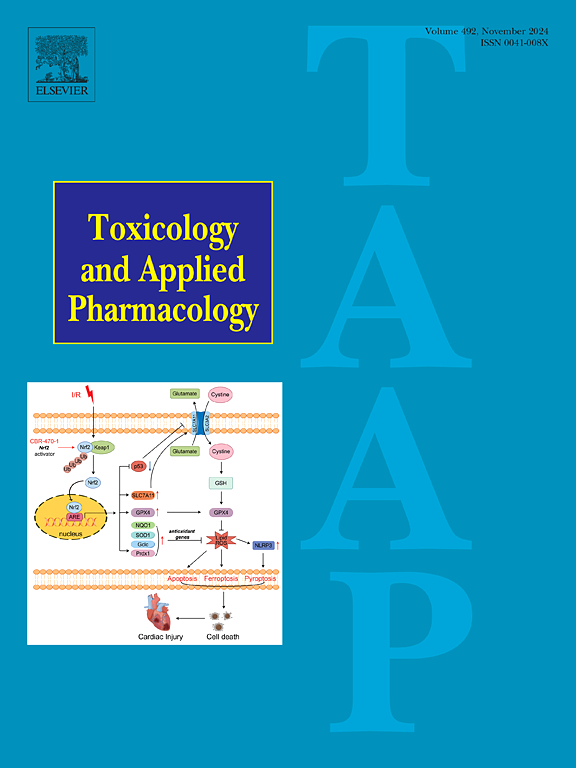Toxic effects of prenatal azithromycin exposure on fetal adrenal gland in mice: The role of stage, dose and course of treatment
IF 3.3
3区 医学
Q2 PHARMACOLOGY & PHARMACY
引用次数: 0
Abstract
Azithromycin is widely used in treating bacterial infections during pregnancy. Previous studies suggest prenatal exposure (PAzE) induces embryonic developmental toxicity. However, the influence of PAzE on fetal adrenal gland development is unknown. Pregnant mice received azithromycin in varying ways: different stages (mid- and late-pregnancy), doses (50, 100, and 200 mg/kg d), and courses (single- and multi-course). Adrenal gland morphology, cell proliferation, apoptosis, steroid synthesis, and expression of key transcriptional factors were examined. PAzE predominantly affected fetal adrenal gland development in males, characterized by obvious pathological changes (irregular arrangement and decreased density of adrenocortical cells, aggravated cytoplasmic vacuolization), weakened cell proliferation (decreased Pcna but increased Caspase3 expression), and inhibited steroidogenesis (reduced expression of Star, 3β-hsd, P450c21, and P450c11). The most significant damage occurred with multi-course high-dose (clinical dose) azithromycin treatment in late-pregnancy, possibly linked to inhibited Cited2 expression. This study delineated the sex-specific toxic effects of PAzE on fetal adrenal gland development, influenced by various stages, doses, and courses of azithromycin treatment. These findings contribute to a better understanding of azithromycin's safe use during pregnancy and offer a crucial theoretical and experimental foundation for future research.
求助全文
约1分钟内获得全文
求助全文
来源期刊
CiteScore
6.80
自引率
2.60%
发文量
309
审稿时长
32 days
期刊介绍:
Toxicology and Applied Pharmacology publishes original scientific research of relevance to animals or humans pertaining to the action of chemicals, drugs, or chemically-defined natural products.
Regular articles address mechanistic approaches to physiological, pharmacologic, biochemical, cellular, or molecular understanding of toxicologic/pathologic lesions and to methods used to describe these responses. Safety Science articles address outstanding state-of-the-art preclinical and human translational characterization of drug and chemical safety employing cutting-edge science. Highly significant Regulatory Safety Science articles will also be considered in this category. Papers concerned with alternatives to the use of experimental animals are encouraged.
Short articles report on high impact studies of broad interest to readers of TAAP that would benefit from rapid publication. These articles should contain no more than a combined total of four figures and tables. Authors should include in their cover letter the justification for consideration of their manuscript as a short article.

 求助内容:
求助内容: 应助结果提醒方式:
应助结果提醒方式:


